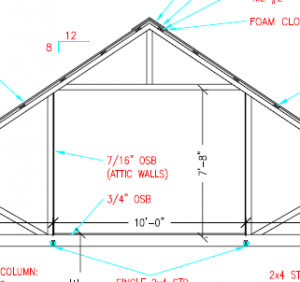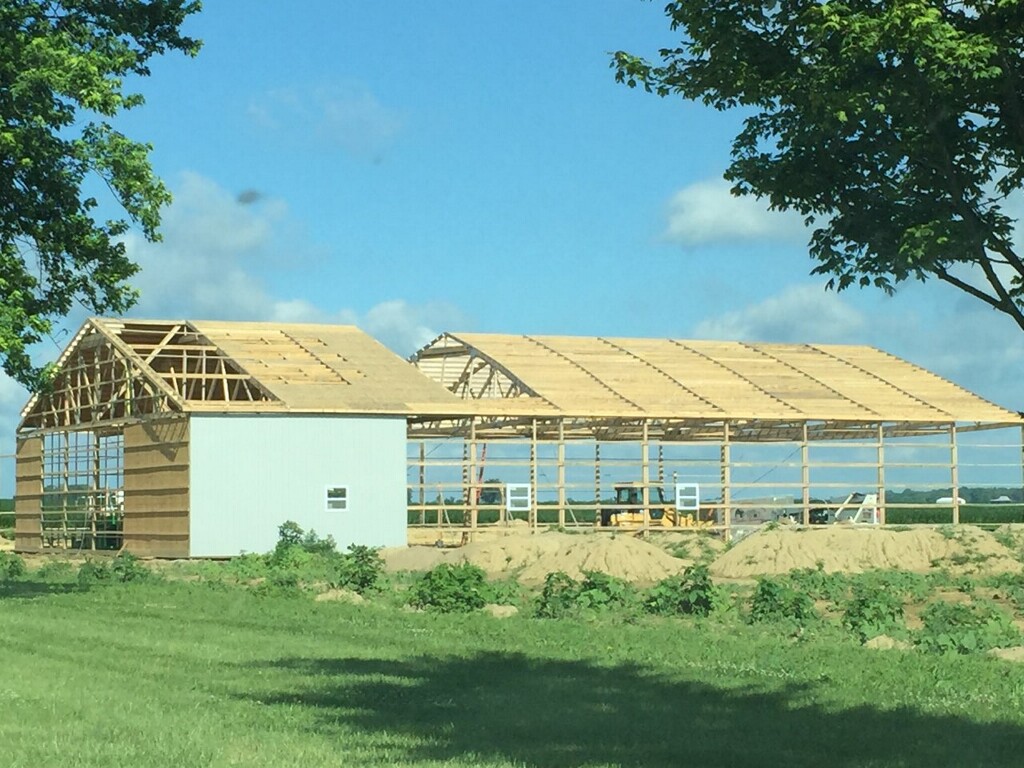Welcome to Ask the Pole Barn Guru – where you can ask questions about building topics, with answers posted on Mondays. With many questions to answer, please be patient to watch for yours to come up on a future Monday segment.
Email all questions to: PoleBarnGuru@HansenPoleBuildings.com
DEAR POLE BARN GURU: I am having trouble determining what sort of trusses I will need for my barn. The walls are 2x6x12, 16 OC with a double plate on top. I need a two foot overhang all the way around. I am going to sheet with steel and using purlins. How do I build the overhangs and what trusses will I need? The pitch is 4/12 and I wish to use a 12″ energy heel. WONDERING IN WISCONSIN
DEAR WONDERING: I have to confess, I am wondering too. The International Building Code (IBC) , in Section 2308 spells out the requirements for conventional light-frame construction, “Other methods are permitted to be used, provided a satisfactory design is submitted showing compliance with other provisions of this code” (which means a registered design professional (RDP)– engineer or architect has provided the design). Section 2308.2.2 of the IBC states, “Bearing wall height shall not exceed a stud height of 10 feet.” This very same language is in the Wisconsin Building Code.
The building plans you paid your RDP to design, should have all of the necessary information on them, for a truss manufacturer to be able to adequately quote the trusses required for your project. Give a copy of the plans to the truss company, and they can take it from there.
If, by some chance, you were erroneously issued a Building Permit without RDP designed plans – you may want to consider consulting with an engineer.
On to the specifics of your question. The truss company needs to know the dimensions of your building – width, length and height. Given you have used stud walls, I would recommend spacing the trusses 24 inches on center, so you will need a quantity of the length of the building divided by two, plus one. The span of the trusses will be the measure from outside of stud wall, to outside of stud wall. Tell them you want two foot overhangs, and a 12 inch energy heel.
Given your location, I would recommend a design with 40 pounds per square foot (psf) roof live load, at least 7 psf roof dead load and at least 5 psf bottom chord dead load. If your building site is open to the wind in one or more directions – be sure the trusses are designed for a “C” wind exposure.
DEAR POLE BARN GURU: My mom is dieing and I’m having to sell things, do you know what I should sell the pole barn fame for? The walls from the ground to the bottom of the roof trusses is 10 ft 5 In it is 27 feet long and 24 feet wide, the poles are 6×6, it has opening for 2 big doors one in the front and one in the back, it has never had any plywood put on it it is a open frame , not sure if the poles are just drop in the ground or cemented in, but I need to sell it and I need to get a good price, anyone have a good idea what to charge ? It has no doors just a wood frame no skin on it at all. Muddling in Michigan
DEAR MUDDLING: While this is not the answer you want to hear – the reality is the cost of the labor to take it apart and haul it away, is greater than the value of the materials. Even if you were lucky enough to get someone to pay a few dollars for it on Craigslist, unless they are insured, the risk of them being injured as they are taking it down, is not worth what little you might gain. You may have enough to deal with right now, but taking it down and the selling the parts may be less risky – for both parties. All my best to you in this difficult time.










I am building a 32×64 post frame barn. 10 ft walls. I am wanting to space 4/12 trusses 4ft OC. Is this spacing OK for a barn?
Provided they are designed for the proper loading and your building’s engineer has correctly sized your truss carriers and all connections it should be okay. Personally I would recommend using a double truss system where they bear directly upon the columns spaced further apart than eight feet.